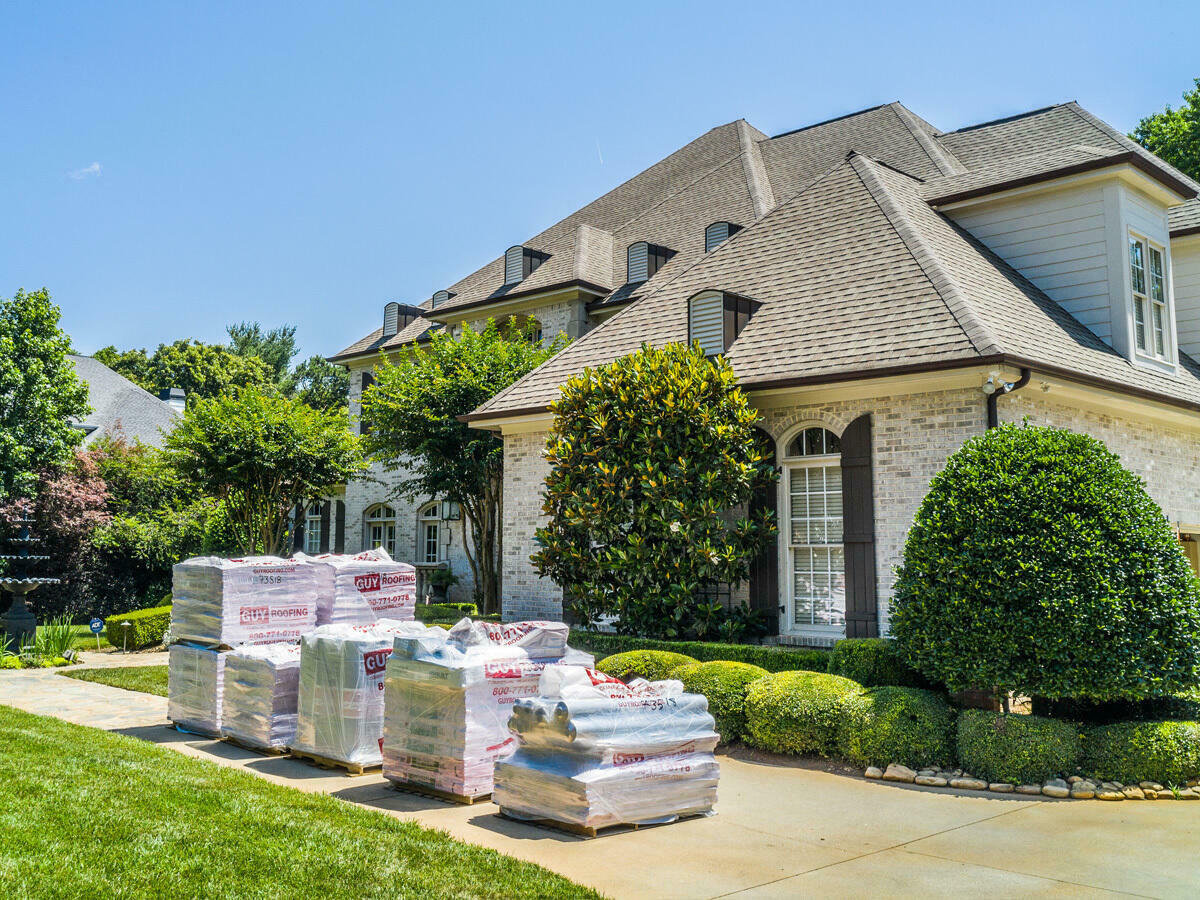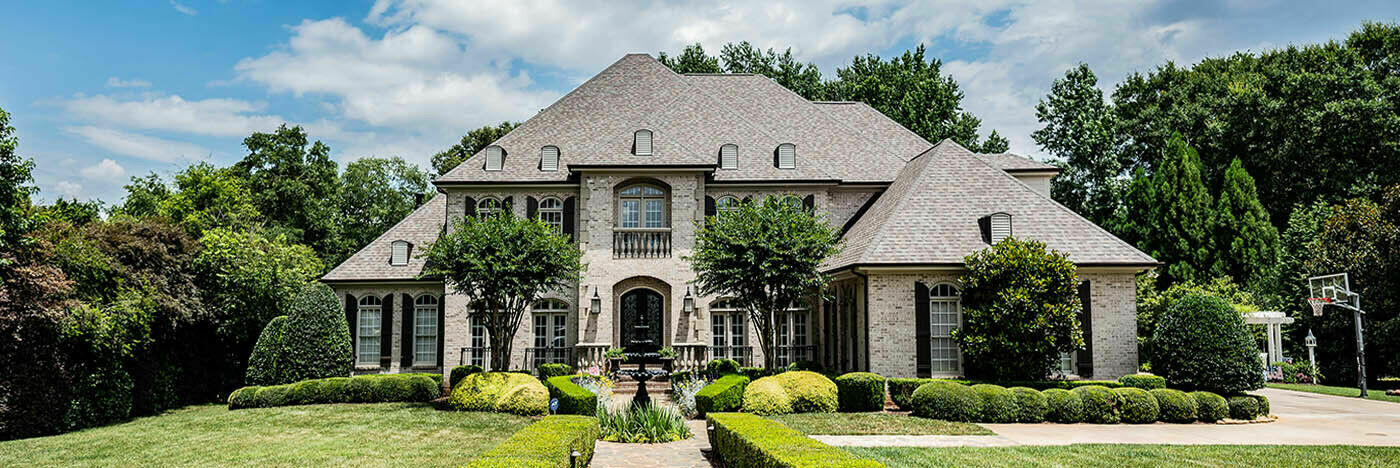It comes as no surprise that roof replacements and repairs are a necessary part of owning a home. Maintenance is crucial in expanding the life of your roof, but sometimes you need to call in a pro. Your roof is the first line of protection against the elements, taking the brunt of the sun, rain, and physical debris like hail, branches, and leaves.
Signs Your Roof Needs Replacement
You may be struggling to determine whether your roof needs a simple repair or a full replacement. While a repair is often substantially cheaper than a roof replacement, it might not resolve your roof issues, which will cost you more in the long run. Essentially, a repair is only a temporary fix. Over time, if your roof is in bad shape, you may spend more money on repairs than if you had your roof replaced in the first place. Below are some reasons that you should consider a full roof replacement.
- You have an asphalt shingle roof that is more than 10 years old.
- The damage to your roof is severe and extremely visible and has exposed decking, water damage, or even holes.
- Your roof has structural failure.
- You want to improve your home’s energy efficiency which could potentially lower your energy bill.
- You are looking to sell your home and want to add value to its appraisal.
Average Roof Replacement Costs
“How much does a roof replacement cost?” We’ve got great news! You can find an affordable option that works for your budget, especially if you have the proper homeowner’s insurance! The cost of a roof replacement ranges greatly and is impacted by many factors including the size of the roof, type of roofing materials, and the complexity of the roof installation itself.

5 Factors That Impact the Cost
Calculating roof repair costs is not as easy as it may seem. There are five key factors that play into the overall price tag. These include:
- Size & Complexity of Roof: The size of the building or home and the amount of materials needed for the job have the biggest impact on your cost. A larger roof takes more time to replace. In other words, the larger your home, the more expensive the roof replacement will be. Materials and roofing prices are measured in 10-by-10-foot areas of 100 square feet called roofing squares. A 2,000-square-foot house typically has a roof of about 2,125 square feet, including the roof pitch and overhang. The shape of your roof can also impact the cost. If the roof is steep or more than two stories off the ground, there can be additional charges because of its complexity and limited access to certain areas.
- Chosen Material: The cost of a roof varies greatly depending on the type of roof material you choose. Shingle roofs are typically less expensive than slate or wood shake roofs. You should weigh your options on both aesthetic and maintenance before deciding on the type of roof you want. Asphalt or three-tab shingles are economically great for homes across a wide geographical area. While metal or slate roofing can cost more than twice that of asphalt or composite shingles, either of these two options will last substantially longer.
- Overall Condition: Sometimes, during a tear off, teams discover that decking is damaged or has started to rot. This must be replaced before moving forward with the scheduled work. Why can’t they just ignore it? One reason is because it won’t solve the problems or trouble areas that are causing leaks or other damage to your home. Typically, it is not allowed for roofers to put new shingles on top of existing shingles, meaning they must remove all existing shingles and any underlying layers.
- Season/Location: Roof replacements are in high demand during the spring and summer months, so the cost may fluctuate due to limited access to labor and supplies. Also, if you live farther out from main service locations, you might end up paying a little more for the travel and time of the company. (Side note: Where you live can determine what kind of roof your home may need. For example, if you live near the coast where harsh saltwater air and lots of severe weather are common, you might want to look at a metal roof.)
- Material and Labor Costs: We touched on this in section one, when you purchase a new roof, you are paying for the labor, supplies, and materials. This section is hard to estimate, as these costs can change greatly based on the current market, inflation, in addition to supply and demand. The roofing material you select for your roof can also impact the cost, not just because of the material itself, but because of the labor required for installation. For example, since asphalt shingles are the quickest to install, the labor costs is typically less expensive.

A roof replacement is a complex job that should be done by a professional to avoid leaks and other detrimental problems. If you would like an inspection to see where your roof’s lifespan stands, call Guy Roofing or set an appointment online today! We handle both repairs and full roof replacements, so we are sure to have your project covered. If you are looking to go elsewhere, make sure the company you call is qualified for your type of project.
4 Ways to Save on Roof Replacement
It might seem like a daunting task, but there are ways to save on your roof replacement.
- Select less expensive materials – this means going with a shingle roof versus a custom copper roof. Have a conversation with the roofing company about pricing and performance of various roofing materials. This allows you to make the best-informed decision that’s right for your budget and your home.
- Do research to determine if you qualify for grants or loans. Some organizations offer local grants or loans that focus on home improvement programs or home repair.
- Check your homeowner’s insurance policy! Usually, your roof replacement will be covered if you have the right coverage. This means you might only owe your deductible for a brand-new roof! You have home insurance for a reason! Check with your representative to see what’s covered on your home before you begin a repair or replacement. You may be tempted to do some DIY projects on your roof for any leaks that might spring up, but it’s not recommended. Roofing is a dangerous and highly skilled trade, even on a single-story home. However, if you choose to move forward and do the project yourself, remember there is no warranty. Also, your insurance won’t reimburse you for your work. Insurance companies only work with contractors or businesses that have certain insurances and licenses.
- Work with a company that offers a warranty on your new roofing system because it means their work is backed and you will be taken care of if any issues arise. Some contractors may be a less expensive, but don’t stand behind their work. RUN! This means you may pay less up front, but you’ll be paying for repairs sooner than you’d like. Guy Roofing stands behind their work – offering their Guy Guard Residential Warranty. If you’re interested in learning more about what this may look like for your home, click here!

In Conclusion
At the end of the day, it’s always important to remember that a good roof can last your home more than 20 years, but it won’t last forever. A roof replacement is one of the largest home improvement projects you’ll ever have to work on, and it is never recommended as a DIY. Take time to do research and hire a licensed roofing contractor with substantial experience in the industry. Guy Roofing is America’s most trusted and professional roofing contractor, so you know you’re in good hands! Book your appointment online today!





